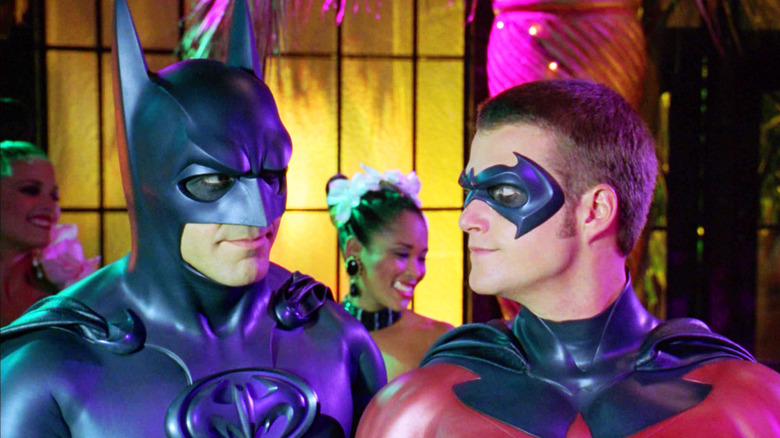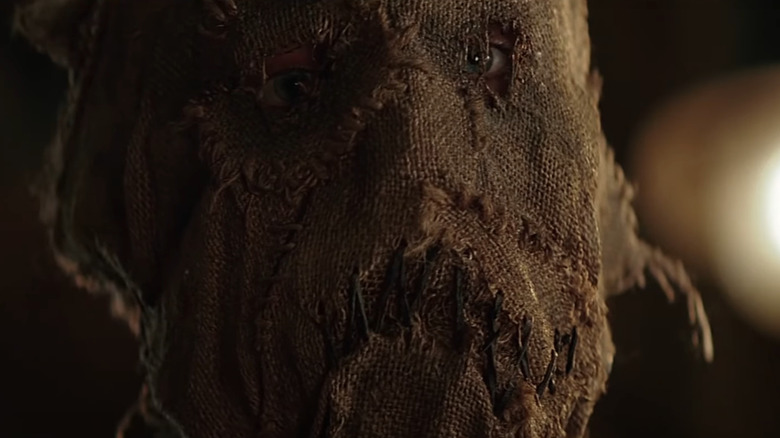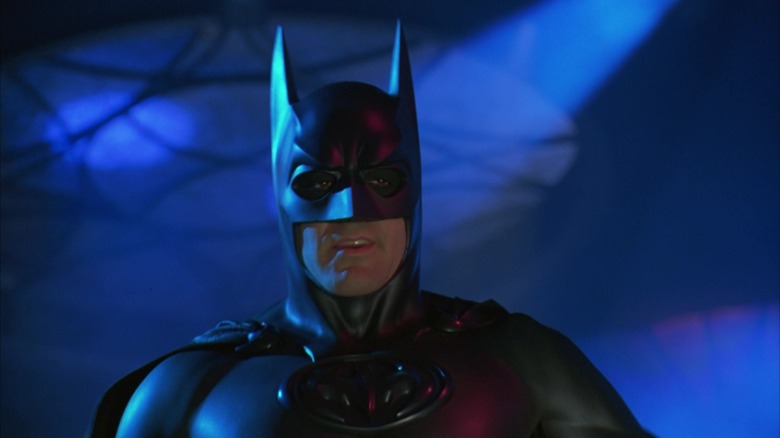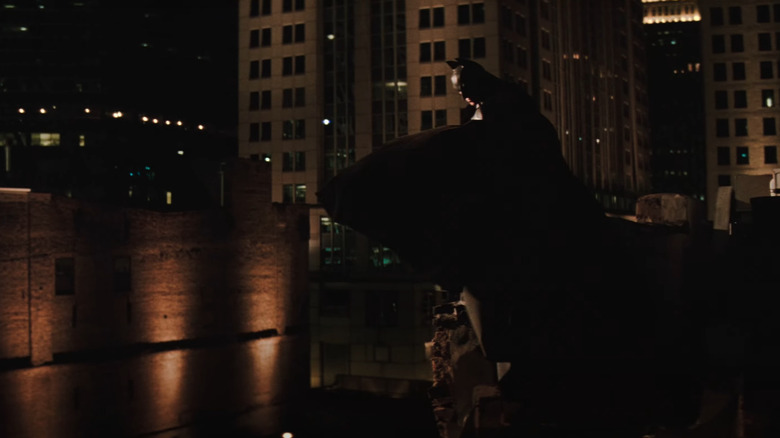Batman: DarKnight Would Have Been Batman & Robin's Opposite In Every Way
The history of Batman on film is well established at this point. Aside from his 1966 outing, we've had the Tim Burton era, the age of Joel Schumacher, the Christopher Nolan trilogy, and most recently, Matt Reeves' "The Batman." But things could have looked very different. Once Tim Burton's 1992 sequel and "weird experiment," "Batman Returns" proved successful, the director prepared to helm the next entry in the franchise. As he recounted in a making-of featurette, he actually met with Warner Bros. and pitched them his idea for a third film, before recognizing the lack of enthusiasm among the studio execs and saying, "You don't want me to make another one, do you?"
Burton was right. Warners didn't want him to make another one — especially since he'd upset the very demographic they and the toy companies were trying to target. Instead, the studio brought in Joel Schumacher to direct 1995's "Batman Forever," which introduced Val Kilmer in the lead role, alongside Chris O'Donnell's Robin. "Forever" raked in an impressive $336 million at the box office, and Warners quickly greenlit a sequel. Unfortunately, it was far too quickly for Kilmer, who had already signed on to star in "The Saint," and George Clooney was brought in to replace him. We were all then treated to the cinematic nadir that was 1997's "Batman & Robin," the film that basically killed off the Batman franchise for the better part of a decade. Ultimately, Christopher Nolan would revive the Dark Knight with "Batman Begins" in 2005, re-establishing the character as the pop culture icon he is.
That's how things happened in our timeline. But there is a version of Batman's cinematic history that could have seen a "Batman & Robin" follow-up that might just have made up for Schumacher's disastrous effort.
Batman: DarKnight
"Batman & Robin" was panned by critics and the audience response wasn't much better. It still managed to make $238 million at the box office, but that was more than $100 million less than its predecessor — which isn't too surprising when you learn about how the "Batman & Robin" set was basically one giant party. The film's campy tone directly undermined the darker vision of Batman that Tim Burton established when the franchise began. And while "Batman Forever" had struck a workable balance between Burton's Gothic take and Joel Schumacher's more light-hearted approach, "Batman & Robin" had taken things too far in the latter direction.
And so, Schumacher was out, despite having a follow-up film planned. As a 2015 article from The Hollywood Reporter recounted, subsequent years would see several attempts at reviving Batman, including pitches from "The Whale" director Darren Aronofsky and none other than the celebrated comic book writer and artist behind "The Dark Knight Returns," Frank Miller.
But perhaps the most intriguing pitch came from a pair of writers who had no blockbuster credits to their name. Lee Shapiro and Stephen Wise had devised a story that brought Batman back to his dark roots once again, and impressed Warner Bros. executive Tom Lassally with their pitch. The studio commissioned a script, which the pair worked on for three months before turning in "Batman: Darknight." The film was planned as a continuation of the established timeline, wherein George Clooney and Chris O'Donnell would return as Batman and Robin. But it was to be a decidedly more mature affair. As Shapiro told THR:
"Our script was just a direct answer to the last movie. Everything we were doing was, 'What did they do? Let's not do that.'"
Making Batman dark again
In Stephen Wise and Lee Shapiro's script, George Clooney's Bruce Wayne was retired as Batman and lived as a recluse, much like Christian Bale's version of the character at the beginning of "The Dark Knight Rises." Meanwhile, Chris O'Donnell's Dick Grayson had gone to college, where he was taught by Professor Jonathan Crane. That name should be familiar to Bat-fans as the real name of legendary Batman rogue The Scarecrow.
After clashing with Crane during a lecture, Grayson is used as a test subject for the professor's newly-developed chemical that causes intense fear and ends up in Arkham Asylum. Elsewhere, another of Crane's experiments transforms his colleague, Kirk Langstrom, into the film's version of Man-Bat — a half human, half bat creature that first appeared in the comics back in 1970. Of course, Bruce Wayne couldn't simply watch all this without doing something, and quickly came out of retirement to face down Crane.
According to THR, the story was meant to have "a Halloween theme" and lean into the darker imagery and more mature themes that Joel Schumacher had abandoned with "Batman & Robin." As to how Johnathan Crane becomes The Scarecrow, Shapiro explained that "his sense of touch is off, so it's heightened his other senses, and it made him like a living scarecrow." After being scarred by Man-Bat, his "mask" takes on the form of "the stitches he puts on himself, and the cauterizing of the wounds and all of that stuff. His face becomes the Scarecrow mask." Despite using a somewhat fantastical villain with Man-Bat, Shapiro and Wise's script was a decidedly dark take on the material that, regardless of how popular it may or may not have proven to be, would clearly have switched things up drastically after "Batman & Robin."
Warner Bros. wanted a full reboot
On his website, Stephen Wise has a page about "Batman: DarKnight" where he reveals the project was in development for two years before Warners decided to scrap the Tim Burton continuity altogether and reboot the franchise. Before the idea was abandoned, Wise and Lee Shapiro were reportedly planning to include a slew of Easter eggs in their Batman movie, including a doctor at Arkham Asylum name Harleen Quinzel — hinting at her possible return as Harley Quinn in a future sequel. Terrence Stamp was reportedly being approached to play Man-Bat, but as time went on, it became clear that Warner Bros. was heading in a different direction, until finally the studio told the screenwriters they would be starting afresh.
Considering we ultimately got "Batman Begins," it's difficult to complain about how things turned out. While Shapiro and Wise's script sounds like an interesting project, there's no doubt that a full reboot was needed to reestablish Batman as a serious character following "Batman & Robin." But it would have been fascinating to see what George Clooney, who basically disowned Schumacher's film after it came out, would have done with a more serious and mature take on the Dark Knight.



